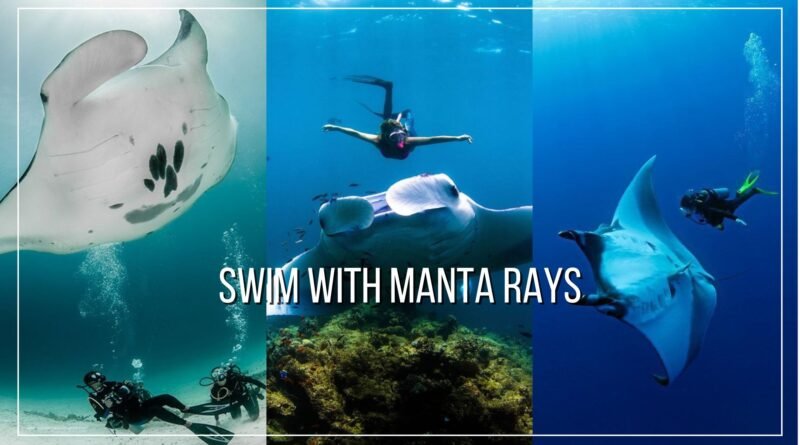How to safely swim with manta rays
Swim with manta rays is an unforgettable experience. These gentle giants are not only beautiful to look at, but they are also harmless to humans. If you’re lucky enough to find yourself in the presence of a manta ray, there are a few things you should keep in mind in order to have a safe and enjoyable experience.
Swimming with Manta Rays
First and foremost, it’s important to remember that manta rays are wild animals. As such, you should always give them the space they need and respect their personal boundaries. Do not attempt to touch or ride a manta ray, as this can be harmful to both you and the ray.
Second, make sure you are a strong swimmer before attempting to swim with manta rays. These creatures are fast and agile, so you will need to be able to keep up with them. If you are not a strong swimmer, consider joining a guided tour so that you can safely observe these amazing animals from a distance.
Lastly, always be aware of your surroundings when swimming in the ocean. Be on the lookout for other animals that might pose a danger, such as sharks or jellyfish. If you see any signs of danger, get out of the water immediately and notify the nearest lifeguard or tour guide.
Curiosities about Manta Rays
Now, let’s go over some fun facts about manta rays so that you can impress your friends and family with your knowledge!
1. Manta rays are actually a type of fish, not a ray.
2. Manta rays can grow to be up to 23 feet long and weigh up to 3,000 pounds.
3. Manta rays are filter feeders and eat plankton, small fish, and squid.
4. Manta rays are found in tropical and subtropical waters around the world.
5. Manta rays are known to be very gentle creatures and there have been no reports of them ever attacking humans.
6. Manta rays give birth to live young and typically have 2-4 pups at a time.
7. Manta rays are listed as a vulnerable species by the International Union for the Conservation of Nature (IUCN).
8. The primary threat to manta rays is overfishing, as their gill plates are prized in some Asian cultures for use in traditional medicine.
9. In 2016, the manta ray was officially listed as a protected species in the United States under the Endangered Species Act.
10. There are currently two species of manta ray that are recognized by scientists: the reef manta ray and the giant oceanic manta ray
Are Manta Rays dangerous?
In short, no. Manta rays are not dangerous to humans and there have been no reports of them ever attacking people. However, as with any wild animal, it is always best to give them space and respect their personal boundaries. Additionally, make sure you are a strong swimmer before attempting to swim with manta rays, as they are fast and agile creatures. Lastly, always be aware of your surroundings when swimming in the ocean, as there may be other animals present that could pose a danger to you (such as sharks or jellyfish). If you see any signs of danger, get out of the water immediately and notify the nearest lifeguard or tour guide.
Conclusion
Swimming with manta rays is an amazing experience that everyone should have at least once in their lifetime. However, it’s important to remember that these creatures are wild animals and should be treated as such. Remember to give them space, respect their boundaries, and be aware of your surroundings at all times. Following these simple guidelines will ensure that you have a safe and enjoyable experience while swimming with manta rays.




